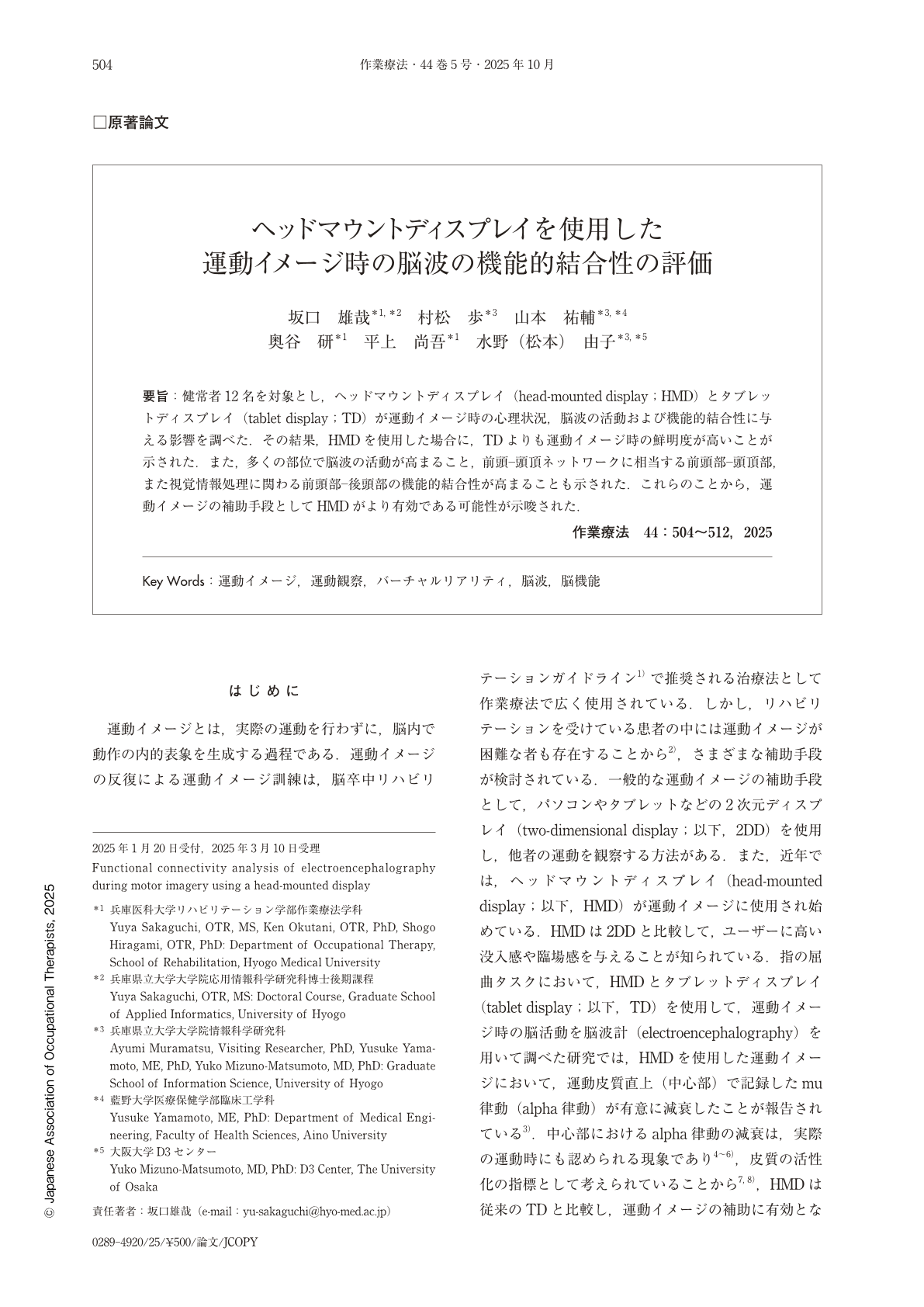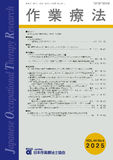Japanese
English
- 販売していません
- Abstract 文献概要
- 1ページ目 Look Inside
- 参考文献 Reference
要旨:健常者12名を対象とし,ヘッドマウントディスプレイ(head-mounted display;HMD)とタブレットディスプレイ(tablet display;TD)が運動イメージ時の心理状況,脳波の活動および機能的結合性に与える影響を調べた.その結果,HMDを使用した場合に,TDよりも運動イメージ時の鮮明度が高いことが示された.また,多くの部位で脳波の活動が高まること,前頭—頭頂ネットワークに相当する前頭部—頭頂部,また視覚情報処理に関わる前頭部—後頭部の機能的結合性が高まることも示された.これらのことから,運動イメージの補助手段としてHMDがより有効である可能性が示唆された.
A head-mounted display (HMD) provides users with a high immersion and presence. This study aimed to compare the effects of an HMD and a conventional two-dimensional display used for motor imagery on mental status, electroencephalography (EEG) power spectrum, and functional connectivity. The participants were 12 healthy individuals engaging in motor imagery immediately after video observation through either an HMD or a tablet display (TD). The motor imagery tasks included finger flexion and block transportation. EEG during motor imagery was recorded with 19 electrodes according to the international 10/20 system. Power spectral and coherence values in the alpha (8-14 Hz) and beta (15-30 Hz) frequency bands were calculated. The results showed that the vividness of motor imagery was significantly higher in the HMD condition than in the TD condition. Moreover, the power spectral values in the alpha and beta frequency bands significantly increased across multiple brain regions. The coherence values were significantly increased in the alpha and beta frequency bands between the frontal-parietal region, corresponding to the frontoparietal network, and between the frontal-occipital region, which is involved in visual information processing. These findings suggest that the HMD may support motor imagery more effectively than TD.

Copyright © 2025, Japanese Association of Occupational Therapists. All rights reserved.


